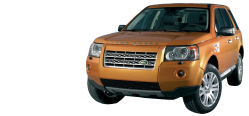
|
|
| Home · FAQ · New Posts · My Posts · PMs · Search · Members · Members Map · Calendar · Profile · Donate · Register · Log In |
 | Home > In Car Electronics > LiFePo4 to LR2 |
 
|
|
|
| balticblueLR2 Member Since: 27 Feb 2023 Location: WA Posts: 37  
|
Very interesting. I got interested in these when I got my jump starter pack with LIon batteries and it started the Mercedes faster than the factory Varta. Really opened my eyes, and I'm well pleased to see this technology evolving.
|
||
|
| jules Member Since: 13 Dec 2007 Location: The Wilds of Warwickshire Posts: 5191  
|
Interesting.
|
||
|
| Lightwater Member Since: 21 Aug 2014 Location: Sydney Northern Beaches Posts: 4929  
|
Even though the Freelander has a brilliant design to circulate air to cool the battery while keeping it separate front the engine bay (putting dust issue aside, nevertheless very good).
|
||
|
| Nodge68 Member Since: 15 Jul 2020 Location: Newquay Posts: 2086  
|
LifePO4 will outlast the vehicle, and can be used in another one afterwards. Or it can be sold on for a decent amount to a second owner. Eventually it can be recycled, but that'll be 20 years + down the line. Hyundai Ioniq 5 Ultimate. The family car. 2009 Rimini Red SE TD4. Gone. 2006 Tonga Green i6 HSE. Gone. Audi A5 convertible, my daily driver. 1972 Hillman Avenger GT, the project. |
||
|
| dorsetfreelander Member Since: 20 Jul 2013 Location: Dorset Posts: 4354  
|
I wonder what the BMS or Battery Management System makes of it? Do you need a reset? 3 x FL1 2 manual + 1 auto
|
||
|
| Nodge68 Member Since: 15 Jul 2020 Location: Newquay Posts: 2086  
|
That's a good question. LifePO4 has very similar voltage characteristics to lead acid. I don't know how the electrical system will respond when the battery's own BMS shuts down charging when the battery is full. A lead acid will naturally reduce charge current as it approaches fully charged, but it'll still absorb some current, which results in gassing.
|
||
|
| IanMetro Member Since: 11 Sep 2017 Location: Somerset BS21 Posts: 3226  
|
I always understood that you needed a different battery charger for lithium batteries (for example for mobility scooters)
|
||
|
| dorsetfreelander Member Since: 20 Jul 2013 Location: Dorset Posts: 4354  
|
From what I have been reading on BMS it's even more complex as the BMS in a car seems to know the age of the battery and manages the charging according to the expected degradation with time. The following might no be the same as for the FL2 but the description implies that you shouldn't try messing about with different battery chemistry.
|
||
|
| IanMetro Member Since: 11 Sep 2017 Location: Somerset BS21 Posts: 3226  
|
No wonder the garage's 5 second quick test, often disagrees with what the car has decided the state/charge of the battery is.
|
||
|
| IanMetro Member Since: 11 Sep 2017 Location: Somerset BS21 Posts: 3226  
|
This could be worded better - from what I remember (and now read) the lithium battery charger charges at a constant current for most of the time, but switches to a constant voltage as it gently fills up the last 10-20%. https://www.analog.com/en/resources/analog...nsing.html FL2 XS SD4 Auto 2010 2012-2017 (21k - 91k miles) (MY2011) FL2 Metropolis SD4 Auto 2014 2017- (16k - 79k+ miles) (MY2015) Metro in its 11th Year of (Extended) LR Warranty / Full LR Service History (Expensive, but Trouble/Worry free - hopefully?) |
||
|
| Trent163 Member Since: 11 Oct 2024 Location: 163 Posts: 14  
|
Almost a year of operation of this battery. The choice was absolutely correct, the battery never failed, even in the frosts of -30..35 degrees. Of course, it was very difficult for him in -35, but due to self-heating, he could nevertheless turn the starter. |
||
|
 
|
|
| All times are GMT |
< Previous Topic | Next Topic > |
Posting Rules
|
Site Copyright © 2006-2025 Futuranet Ltd & Martin Lewis
![]()


